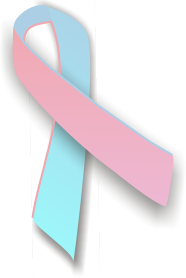User:KimberlyJaramillo
Infant loss Awareness[edit]
Infant Loss Awareness is a campaign in which people raise awareness for families who have lost a child. This awareness provides an opportunity for families who have lost a child to come together as a group and find a safe place to share their stories.
Families can find solace in one another while also gaining knowledge on baby loss and important information pertinent on handling a loss infant and the proper steps going forward. This includes awareness of all types of pregnancy loss, including stillbirth, miscarriage, medically necessary abortion, newborn mortality, and SIDS[1].
Pregnancy loss affects around 10 percent of known pregnancies in the US alone annually. A miscarriage typically refers to a pregnancy loss before 4 and a half months of pregnancy. A loss outside of those 20 weeks are considered stillbirths. Both miscarriages and stillbirths are categorized as infant loss. Most losses can occur before 2 months of the pregnancy.[2]
October 15th is revered as Pregnancy and Infant Loss Remembrance Day. October 9th to 15th is Baby Loss Awareness Week. However, October is Infant Loss Awareness month, not limiting the awareness period to just a day or a week. In order to promote Pregnancy and Infant loss, ribbons colored with pink and blue are the signature colors of the event.

History[edit]
In 1988, President Ronald Regan proclaimed October as Pregnancy and Infant Loss Awareness Month.[3] “October recognizes the loss many parents experience nationwide, including miscarriage, ectopic pregnancy, molar pregnancy, stillbirths, birth defects, SIDS, and other causes. In 1988, President Reagan proclaimed October as Pregnancy and Infant Loss Awareness Month (Hicks)[4].”
“The month of October recognizes parenthood in the context of empty arms. It is a time to celebrate the courage these parents have in the dreadful reality of loss (Hicks).”[5]
In 2002, a petition to the federal government was raised by Robyn Bear, Lisa Brown and Tammy Novak to make October 15th Pregnancy and Infant Loss Remembrance Day which is now proclaimed by all states in America.
Aside from the US, there are other countries that observe Pregnancy and Infant Loss Awareness like the UK, Canada and Australia who all reserved the month of October for its proclamation.
Ribbon colors and its significance[edit]
The origins of the Pink and Blue ribbon is explained by the Baby Loss Awareness website. “In 2006 the distinctive two colour ribbon was introduced and the ribbon pins were once again made by bereaved parents with the help of their family and friends (Baby Loss Awareness).”[6]
Pink and Blue are often associated with children and synonymous with events like baby showers and gender reveal parties. These colors are also present in other awarenesses like male breast cancer awareness.
Assistance[edit]
Organizations such as Group B Strep Support aid families with the loss of infants. Some testimonies from Group B Support prove the effectiveness of organizations like these “Group B Strep Support were very helpful and helped me to feel a bit more grounded and to think less catastrophically (Plumb)."
Families and nurses are often at a loss for words or actions in the aftermath of a baby's death. Women must express their thoughts and feelings to their partners, but they must also listen and engage with their partners in order to work through grief and loss together[7]. “Nurses, families, and friends don't always know what they should say or do when a patient or a loved one experiences loss (Hicks)." Meaningful interventions include remembering, validating, and "loving" them along with their family, which provides the family with assistance and support from nurses who assist during times such as losing a baby.
“Healthcare professionals should provide comfort, offer choices and support families in the decisions they make (Wild)."[8] Nursing education programs in hospitals help nurses comprehend the significance of all the work they do after completing these training sessions. Nursing students in the Beyond Bea program learn how to comfort people who are mourning the loss of a baby. Nurses will receive tissues, guidance on how to communicate in specific situations, and suggestions on what gestures and behaviors to use. These lessons will be crucial during occasions like this.
The kind of memories a woman has of the hospital where her child dies is frequently influenced by the support she gets there.
According to the statement, “Parents who receive adequate support after the death of a baby generally come to terms with their loss more easily and are able to carry on with their lives with greater ease (Conry, Prinsloo),"[9] the nature of the mother's memories is frequently dictated by the support she receives in the hospital where her baby dies. Hospitals that offer support to parents will assist them in recovering from their loss and moving toward acceptance.
References[edit]
- ^ "NursingALD.com - Pregnancy & Infant Loss Awareness". nursingALD. Retrieved 2022-12-08.
- ^ "Pregnancy and Infant Loss Awareness Month - Capital Women's Care | MD, DC, & VA". www.cwcare.net. Retrieved 2022-12-08.
- ^ Writer, Jana Lynn Kilcrease | Herald Staff. "Butterflies fly free for remembrance ceremony". The Killeen Daily Herald. Retrieved 2022-12-08.
- ^ "NursingALD.com - Pregnancy & Infant Loss Awareness". nursingALD. Retrieved 2022-12-08.
- ^ "NursingALD.com - Pregnancy & Infant Loss Awareness". nursingALD. Retrieved 2022-12-08.
- ^ "Pink & Blue – Baby Loss Awareness Week". Retrieved 2022-12-08.
- ^ "Pregnancy and Infant Loss Awareness Month - Capital Women's Care | MD, DC, & VA". www.cwcare.net. Retrieved 2022-12-08.
- ^ "British Journal Of Midwifery - More than a statistic: compassion in baby loss training". British Journal Of Midwifery. Retrieved 2022-12-08.
- ^ Conry, J.; Prinsloo, C. (2008-06-01). "Mothers' access to supportive hospital services after the loss of a baby through stillbirth or neonatal death". Health SA Gesondheid. 13 (2): 14–25.
